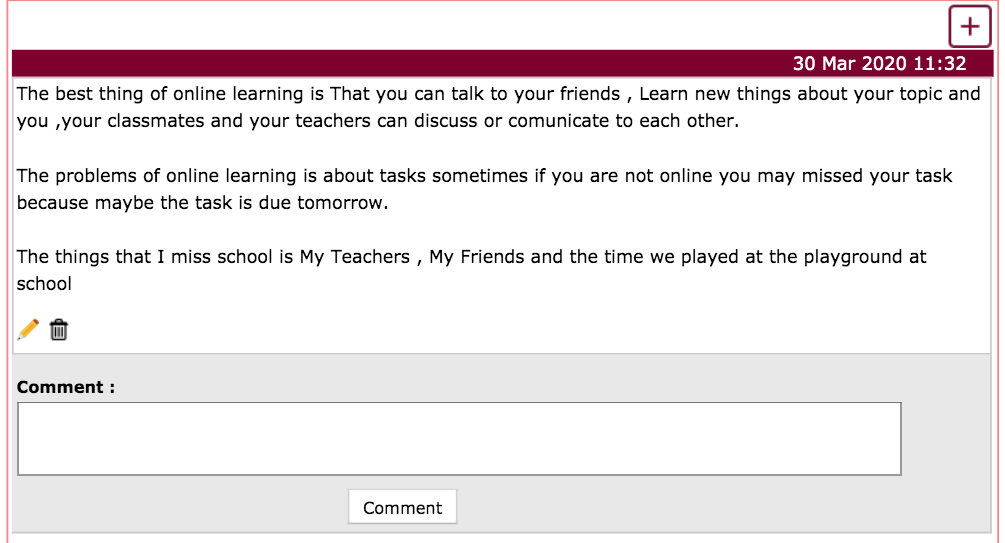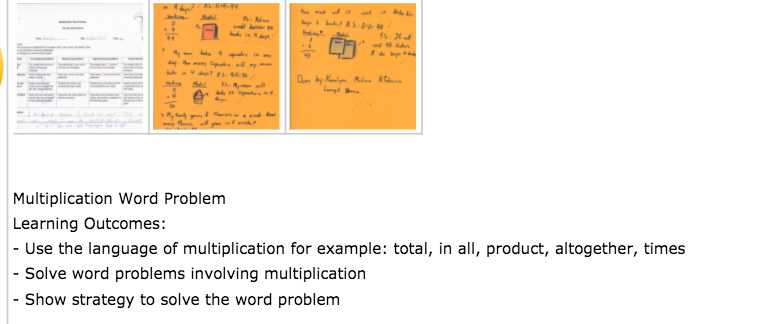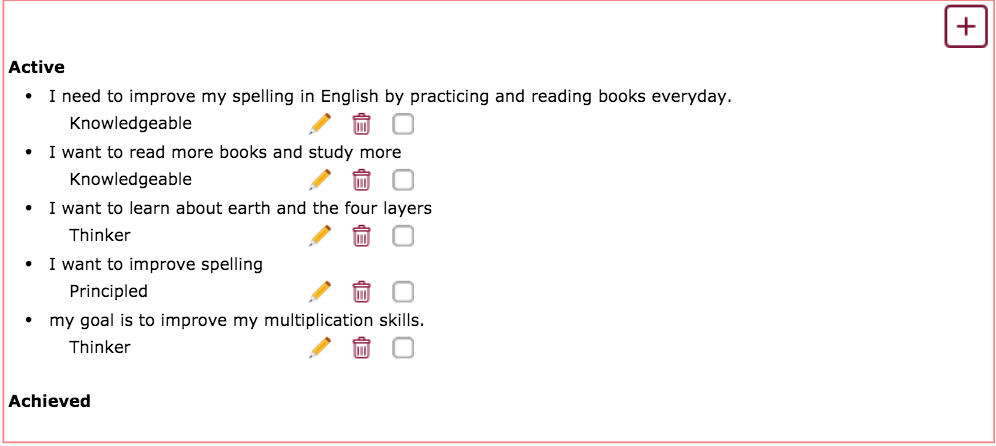Month: April 2020
UOI 6 Front Loading Activity
Year 4 at Global Jaya School has just begun our last UOI. We are doing UOI 6 under the Transdisciplinary Theme of How The World Works. We will be looking at natural disasters and how humans prepare, react to, and try to minimize their damage. As part of our UOI provocation, we had a guest speaker join us. We were lucky enough to have Pak Sean join us. He is a city and urban planner working for Stormont Partners in Canada. Pak Sean was able to teach and explain to us about what goes into city planning in terms of preventing and planning for natural disasters along with continued growth of a city.
Video: https://drive.google.com/drive/folders/103S9lFO-ySzaXKII089u2caym2ObNsNt
In addition, Year 4 at Global Jaya School has been adapting to online learning very well over the past few weeks. We are using a variety of resources such as the Google Suite to communicate and turn in our work alongside ManageBac, National Geographic to learn about natural disasters, and Khan Academy to supplement our learning of math, story-telling and narrative writing, and other student-initiated inquiry in a variety of subjects and topics among other online resources. We have also continued to do different mindful activities that will help us prepare to learn while not always using gadgets or screens. One of the student’s favourite activities was making cloud shapes from the sky and sharing those with each other.
Pak Mike – Year 4 teacher
Students miss friends, teachers, and playgrounds during home learning
Friends, teachers, and playgrounds.
Day by day, they are the ones students miss as they do their home learning following the closure of schools as part of measures to prevent the further spread of coronavirus 2019 (COVID-19).
Elementary students at BINUS SCHOOL Simprug in Jakarta were asked to reflect on their home learning programme, and most of them revealed that they are longing for their friends, teachers, and school playgrounds.
“What I miss most from school is that I cannot see my friends and play with them. It is not the same seeing them online or even chatting with them,” a grade 2 student wrote in her online reflection journal.
“I miss my teachers, my friends, and the time we played at the playground at school,” another student wrote.
The school playgrounds being missed by students
“The hard thing about online learning is that I cannot meet my friends. I cannot meet my teachers, and I cannot play with my friends,” an eight-year-old student quipped.
“I miss talking and playing with my friends at school,” said another primary student.
“I miss the classroom and our work which we displayed in the class and outside of the class,” a student disclosed.
One student reflected that she yearns sitting at her table. Another student mentioned that she misses asking personal help from her teachers. In addition, a student pointed out that she had been wanting to wear her school uniform.
“I miss school assemblies,” a second-grader posted in her reflection log. At BINUS SCHOOL Simprug, students in various grade levels get to perform during school assemblies. Early years and elementary students were supposed to showcase their various talents last March 4 and on April 22, but the performances this semester have been cancelled. Grade 1 students were also set to perform Dr. Seuss’ “The Lorax” musical play, which is related to their “How we express ourselves” and “Sharing the planet” units of inquiry, during the school assembly but had to be rescheduled.
Early Years and Elementary Assemblies
On March 14, the Jakarta administration ordered all schools in Indonesia’s capital city to be closed and students to study through distance learning. Following the announcement from Jakarta Governor Anies Baswedan, BINUS SCHOOL Simprug implemented home learning programme using Microsoft Teams.
To make up for their face-to-face playtime with their friends, students suggested to their teachers to create a “playground” channel on Microsoft Teams.
“The best thing about online school is there will be a playground channel,” a student wrote.
Aside from learning the use of Microsoft Teams, the home learning programme is teaching students new skills. One student wrote that she is learning to type fast. Another student pointed out that he is learning to bake bread with his family members. A grade 4 student also wrote that she is learning to make cookies and do household chores. Another student said that by staying at home, she is enjoying cleaning her bedroom and watering the garden with her brother.
Students, however, understand the reason for the implementation of the home learning programme and are taking action to stop the spread of COVID-19.
“The final term has started, and we are doing the home learning for us to be safe,” wrote one student.
“I want COVID-19 to end,” a student in grade 4 jotted down in his online reflection log.
Examples of student-initiated action
In her reflection, a 10-year-old student emphasised the importance of staying at home to “save more than one life” and not spreading fake news about COVID-19.
“We should not increase panic by posting unnecessary videos about COVID. Don’t tell lies,” the student wrote.
By: Richel Langit-Dursin
EY & EL Vice Principal and PYP Coordinator
BINUS SCHOOL Simprug
mdursin@binus.edu
Creating Online Portfolios
As educators, we also think of how we can be innovators. Being innovators helps us improve practices and make positive changes.
An innovation that we made at BINUS SCHOOL Simprug is to create our own system for online portfolios that benefit our early years and elementary students.
In developing our own system for online portfolios, we wanted to strengthen communication between teachers and parents, teachers and students, and parents and their children; increase parent engagement in their child’s performance; and enhance students’ ownership of their learning.
Our online portfolio project consisted of three major sections, namely learning goals, coursework and student reflections. In October 2019, we completed the last phase of our online portfolios project. The final phase was designing a section for students to post their reflections as shown in Figure 1.

Figure 1: Student reflection
The first phase of the online portfolios project was completed in October 2017. The first phase allowed teachers to upload video and audio recordings as well as pictures of students doing individual and group tasks to the system. Teachers can also upload students’ work, including assessment rubrics, checklists and other assessment tools, to the portfolio system as shown in Figure 2.

Figure 2: Sample coursework
In July 2018, the section for learning goals was developed. The creation of the learning goals segment was the second phase of our online portfolios project. With the segment, students, teachers, and parents can set learning goals for students related to the IB Learner Profile and give feedback. Students, teachers, and parents are also able to track whether students have achieved their learning goals as shown in Figure 3.

Figure 3: Sample learning goals written by a student
Looking back, we used A4-size clear folders for our offline and more physical student portfolios. We implemented the use of clear folders in early years and elementary levels for about 12 years. Our portfolio folders contained a collection of students’ work in different subjects. Every time we had our parent-teacher, parent-teacher-student, and student-led conferences, our students explained their portfolio pieces to their parents. The use of portfolio folders, however, had its limitations.

Our old portfolio folders
The idea of creating our own online portfolios to meet the needs of our school community was conceptualized in July 2017. Given the fact that BINUS is best known for its IT specialization, we figured, why not develop our own platform for online portfolios? So we did.
Creating our own online portfolios for our students has its multiple benefits, and they include the following:
- Allow teachers and parents to keep track of the children’s learning and progress anytime and anywhere. Since teachers and parents are well informed of student performance, they are able to provide further support and guidance to the children to maximize their potential.
- Enable students to reflect on their learning and become self-directed learners. By reflecting on their own learning, students know the areas they are doing well and what they need to improve. Students are able to do self-assessment and own their learning. Students also have a stronger understanding of themselves as learners.
- Enhance communication, critical thinking, creative thinking, and information literacy skills of students. Students are free to express their ideas and post their reflections about units of inquiry or any subject matter anytime.
- Facilitate the giving of feedback to students. Teachers and parents can easily provide feedback to students since the portfolios are accessible from various locations and by many individuals simultaneously.
- Document and celebrate student learning. The online portfolios highlight what the students are able to do throughout the school year. When teachers post students’ work, including video recordings of student performances and presentations, students feel valued and recognized for what they can do.
- Allow teachers to see previous academic performance of students and learn more about them. Teachers are able to view the files of students in the previous school year and get to know them more and address their needs.
- Reduce the use of paper and printing. In using portfolio folders, teachers had to print students’ work. Sheets were inserted into portfolio folders. For online portfolios, the school does not have to purchase clear folders for all early years and elementary students.
In developing our own portal for digital portfolios for our students, we collaborated with our IT department and also pulled feedback from colleagues, parents, and students. We kept in mind that innovation is a process, not an event.
By: Richel Langit-Dursin
EY & EL Vice Principal and PYP Coordinator
BINUS SCHOOL Simprug
mdursin@binus.edu
Fun with Taekwondo
Every Friday, students from early years until grade 3 attend an elective class after school. Students have many elective classes to choose from at BINUS SCHOOL Simprug, and one of their favorites is taekwondo.
Taekwondo is a sport that helps children to stay in excellent physical condition. Taekwondo for children is more than just kicking and punching. It also helps children to concentrate, cooperate, and control their body. It helps stimulate the brain, assisting with focus. The sport also allows children to move and release the energy that they have built up all day in their classes.
Benefits of taekwondo for children include the following:
- Improves physical stamina
- Enhances muscle strength
- Increases flexibility
- Develops confidence and courage
- Increases attention span
- Promotes self-control, self-discipline, and resilience
- Helps to release stress
Here are some photos of our taekwondo elective, which includes doing meditation at the beginning and end of the class.
 Students meditating
Students meditating
Students doing warm-up exercises
Taekwondo coaches teach the children different techniques of defense and attack as they play and enjoy. Exercises like running, jumping, weaving through cones, and bending are enthusiastically done by the students.

 Students weaving through cones
Students weaving through cones

Students doing the straight punch
Demonstrating the front kick
By: Eka Fridayanti
Grade 3 Co-Teacher
BINUS SCHOOL Simprug


